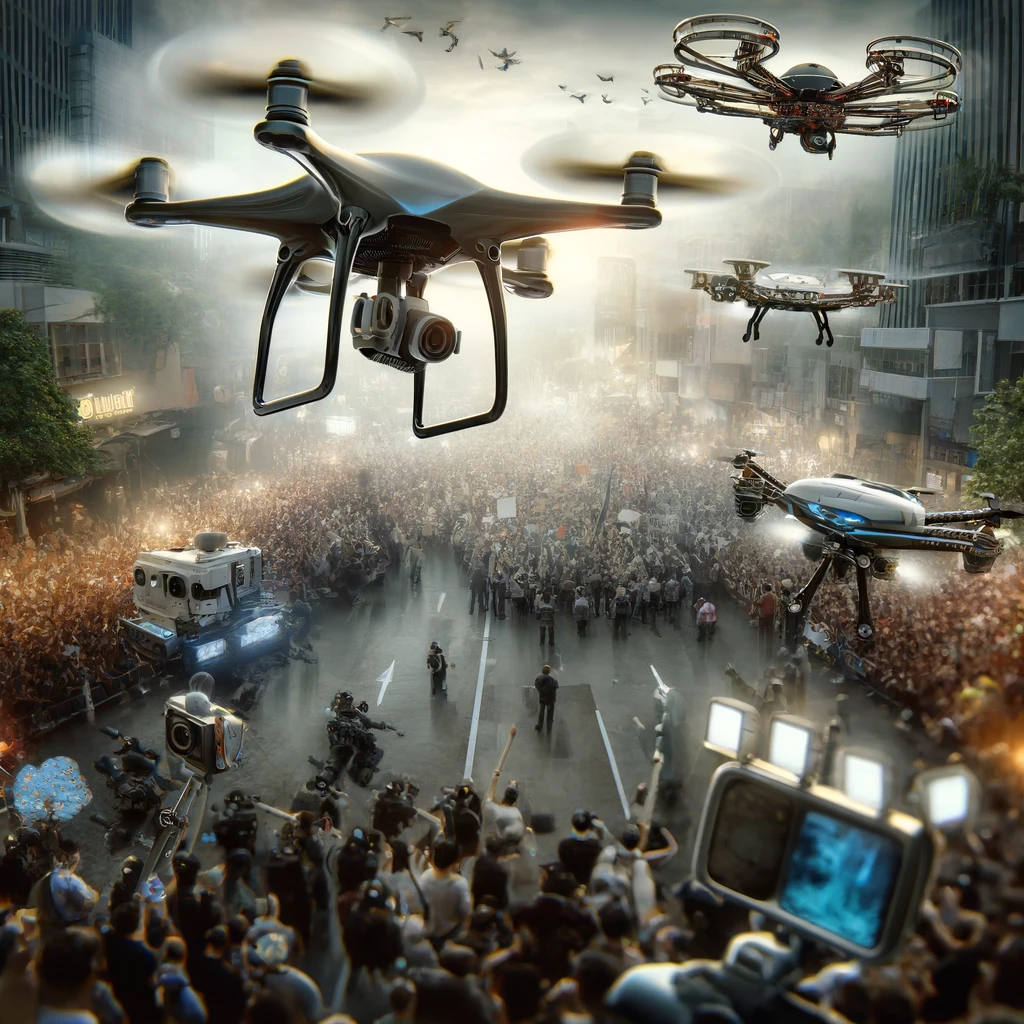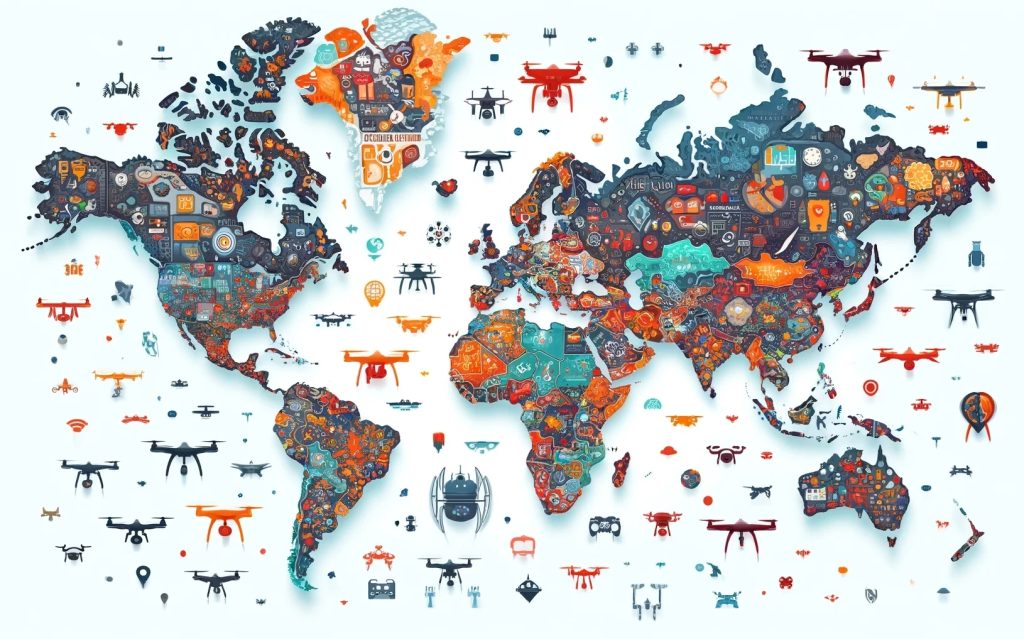
The use of drones against police forces in the United States marks a challenging development in law enforcement and public safety. As drones become more accessible and technologically advanced, their deployment in conflicts with law enforcement has surfaced as a significant issue, requiring new strategies and regulations.

The utilization of drones against police typically involves surveillance or interference tactics. Individuals have employed drones to monitor police movements, record interactions, and sometimes interfere with police operations. The aerial perspective provided by drones can be used to gain tactical advantages during protests or standoffs, complicating the police’s traditional crowd control and tactical response measures.
One notable aspect of drone use against police is its impact on privacy and surveillance. Drones equipped with cameras and other sensory equipment can collect detailed information from a safe distance, often without the knowledge or consent of those being surveilled. This capability raises significant concerns about privacy rights and the ethical implications of surveillance, especially during sensitive situations like protests or public gatherings where tensions are high.
Drones can be used to interfere with police activities by physically obstructing or distracting law enforcement officers during critical operations. For example, drones have been flown in the vicinity of crime scenes or accident sites, potentially contaminating evidence or disrupting investigative procedures. This type of interference challenges the operational security and effectiveness of law enforcement, requiring officers to divert resources to mitigate the threats posed by these unmanned aircraft.
The technological capabilities of drones also present formidable challenges. Modern drones can be equipped with features such as facial recognition software, night vision, and thermal imaging, making them powerful tools for surveillance that can be difficult to counteract without specialized equipment. Additionally, the increasing affordability and availability of drone technology make it accessible to a wide range of individuals, including those with malicious intent against law enforcement agencies.
In response to these challenges, police departments across the country are developing counter-drone strategies and technologies. These include the use of jamming devices to disrupt drone signals, training special units to operate police drones for surveillance and interception, and implementing legal measures to restrict unauthorized drone flights over critical areas. The Federal Aviation Administration (FAA) also plays a crucial role by regulating drone flights and establishing no-fly zones around sensitive locations to prevent misuse.
However, the rapid advancement of drone technology constantly tests these countermeasures. The agility and adaptability of drones require continuous updates and modifications to law enforcement approaches. Moreover, the legal landscape surrounding drone use is still evolving, with ongoing debates about the balance between security and civil liberties.$Law enforcement agencies also engage in public education campaigns to inform drone operators about the legal ramifications of interfering with police operations. By clarifying the potential consequences and encouraging responsible drone use, police hope to reduce incidents of misuse and enhance public safety.
The use of drones against police in the United States presents a complex array of challenges and opportunities. As drone technology continues to evolve, so too must the strategies employed by law enforcement to ensure public safety while respecting privacy and civil liberties. This dynamic field requires ongoing attention, adaptation, and thoughtful regulation to mitigate the risks associated with drone technology in law enforcement contexts.
Artistic depiction of various drones used at protests, set in an urban environment with a large crowd in the background. The image features small surveillance drones and a larger broadcast drone in action.
World map highlighting the use of drones globally, with various regions shaded to indicate the intensity of drone usage and specific types of drones represented over key areas.